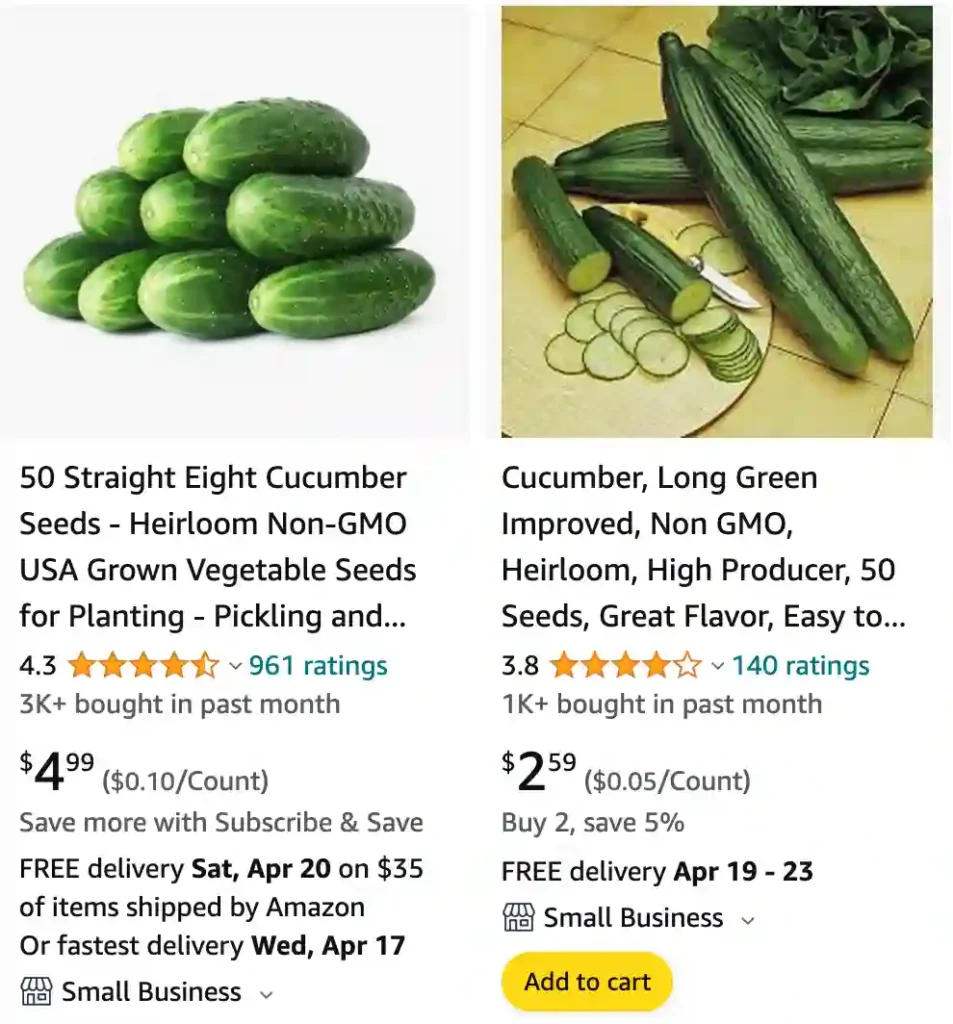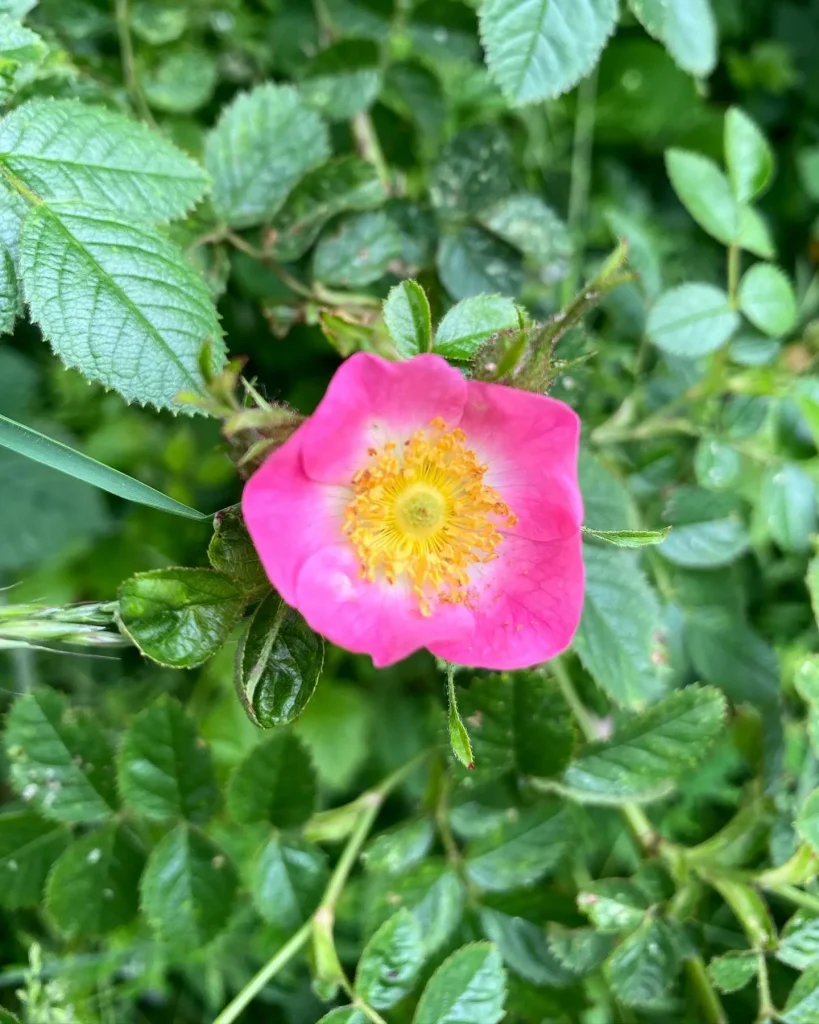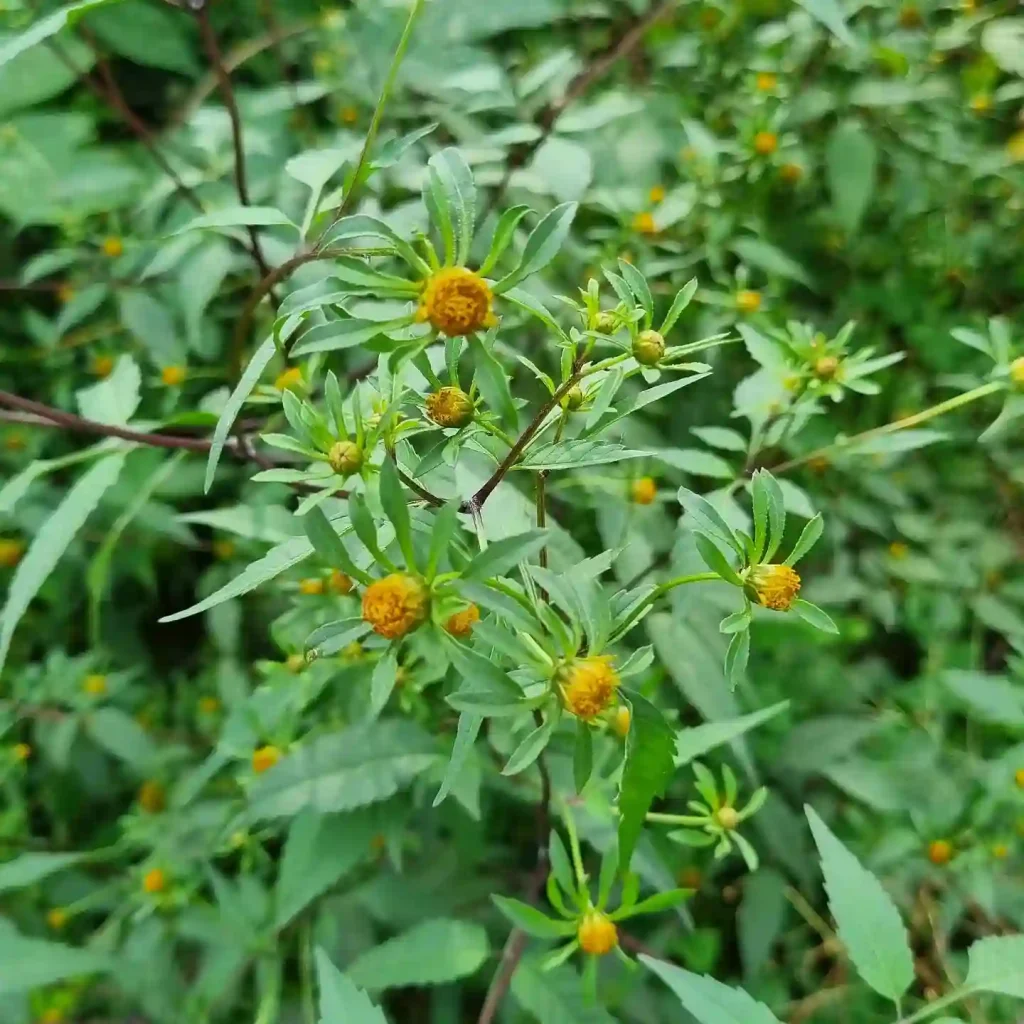
Cucumber – Cucumis Sativus: A Journey Into the Crisp Green Marvel
Cucumbers have always held a special place in my gardening journey. As a gardener, I appreciate how Cucumis sativus, or the humble cucumber, offers a unique combination of ease, utility, and satisfaction. From planting the seeds to harvesting the fruit, every step of growing cucumbers is rewarding.
My First Encounter With Cucumber Gardening
I still remember my first experience with cucumbers. I started with the popular slicing variety, curious about its reputation for rapid growth and refreshing taste. I prepared the soil, ensuring it was rich, loamy, and well-drained. Cucumbers thrive in slightly acidic to neutral soil (pH 6.0-7.0), so I made sure to test and adjust the soil pH before planting.
As a vine-loving plant, cucumbers require ample space or vertical support. I opted for trellises, not just to save ground space but also to keep the fruits off the soil, reducing the risk of rot and pests. Watching the delicate tendrils grip the trellis was fascinating—it felt like nature’s own architectural dance.
Planting and Nurturing Cucumbers
Cucumber seeds germinate quickly, especially when the soil temperature is warm (above 70°F). I planted them in late spring, spacing them about 12 inches apart for proper airflow. Within a week, the seeds sprouted, and I was greeted by vibrant green cotyledons. These seedlings, so full of promise, required regular watering. Cucumbers are over 90% water, so hydration is crucial for their growth and flavor.
Mulching around the plants became my secret weapon. It conserved moisture, kept weeds at bay, and moderated soil temperature. Regular fertilizing with a balanced organic fertilizer ensured the vines had enough nutrients to flourish. I remember marveling at how quickly the plants grew, their leaves unfurling in the sunlight.
Challenges and Lessons
Cucumber plants are not without their challenges. I’ve had my fair share of battles with powdery mildew and cucumber beetles. Powdery mildew, with its powdery white coating, thrives in humid conditions. To combat this, I ensured proper spacing for air circulation and used a homemade neem oil spray.
Cucumber beetles were trickier. These pests can transmit bacterial wilt, a disease that devastates the plant. I used yellow sticky traps to monitor and reduce their numbers. Companion planting with marigolds and nasturtiums also helped deter these pests.
Learning to pick cucumbers at the right time was another critical lesson. Overripe cucumbers turn bitter, while underripe ones lack flavor. The key is to harvest them when they’re firm, with a uniform green color. For most varieties, this means picking them when they’re 6-8 inches long.
Culinary and Nutritional Joys
Cucumbers aren’t just a treat for the eyes in the garden; they’re also a delight in the kitchen. I’ve enjoyed them in countless ways—sliced thinly in salads, blended into cooling cucumber soup, or transformed into tangy pickles. Their crisp texture and mild flavor make them versatile.
Nutritionally, cucumbers are a powerhouse. Low in calories and high in hydration, they’re an excellent addition to a healthy diet. They also provide vitamins K and C, potassium, and antioxidants. Including cucumbers in my meals always feels like a step toward better health.
FAQs
Can dogs eat cucumbers?
Dogs can eat cucumbers, and my pooch absolutely loves them! Whenever I’m chopping up cucumbers for a salad or snack, my furry friend always comes sniffing around, hoping for a bite. I usually give him a few slices, and he happily crunches away. It’s a refreshing and hydrating treat for him, especially on hot summer days.
Is cucumber a fruit?
Cucumber is actually a fruit, which surprised me when I first learned about it. I always thought of cucumbers as vegetables because of their savory flavor and common use in salads and savory dishes. But botanically speaking, they belong to the gourd family, making them fruits. It’s fascinating how nature categorizes things sometimes!
How to pickle cucumbers?
Pickling cucumbers is a fun and tasty way to preserve them for longer periods. I learned how to pickle cucumbers from my grandmother, who passed down her secret family recipe. It involves soaking the cucumbers in a brine solution with vinegar, salt, and spices, then letting them ferment for a while to develop that delicious tangy flavor. It’s a tradition I cherish and enjoy continuing in my own kitchen.
How many calories in a cucumber?
When it comes to calories, cucumbers are incredibly low in them, which makes them a guilt-free snack option. I often munch on cucumber slices when I’m trying to watch my calorie intake. They’re so light and refreshing, and I can enjoy them without worrying about overindulging.
How to store cucumbers?
Storing cucumbers properly is essential to keep them fresh for as long as possible. I’ve found that storing them in the refrigerator crisper drawer wrapped in a paper towel helps absorb excess moisture and prevents them from becoming soggy too quickly. Alternatively, you can also store them in a perforated plastic bag to maintain their crispness.
How to grow cucumbers?
Growing cucumbers in my garden has been a rewarding experience. I love watching the vines climb and seeing the bright yellow flowers turn into crisp green cucumbers. I make sure to provide them with plenty of sunlight, water, and support for climbing. It’s so satisfying to harvest my own fresh cucumbers to enjoy all summer long.
Why are cats afraid of cucumbers?
I’ve heard that cats are afraid of cucumbers because of their sudden appearance, resembling snakes to them. I’ve never tried it myself because I wouldn’t want to intentionally scare my feline friend. But it’s a curious phenomenon that seems to have gained traction online.
How to make cucumber water?
Making cucumber water is super easy and refreshing, especially during hot weather. I simply slice up a cucumber and add it to a pitcher of water, along with some fresh mint leaves for extra flavor. Then I let it infuse in the fridge for a few hours before serving over ice. It’s a healthy and hydrating alternative to sugary drinks.
Can cats eat cucumbers?
I’ve never personally given cucumbers to my cats, but I’ve heard mixed opinions on whether they can eat them safely. Some sources say it’s okay in moderation, while others advise against it due to potential digestive issues. I prefer to err on the side of caution and stick to cat-friendly treats.
Can chickens eat cucumbers?
Chickens can definitely eat cucumbers, and mine go crazy for them! Whenever I have surplus cucumbers from my garden, I love tossing them into the chicken coop as a tasty treat. It’s a great way to supplement their diet and keep them happy and healthy.
Can rabbits eat cucumbers?
Rabbits can safely eat cucumbers as part of their diet, but moderation is key. I’ve given cucumber slices to my pet rabbit as an occasional treat, and he seems to enjoy them. However, too much cucumber can cause digestive issues, so I make sure to offer it in small amounts.
How to make cucumber salad?
Making cucumber salad is one of my favorite ways to enjoy this versatile vegetable. I simply slice up cucumbers, onions, and tomatoes, then toss them together with a tangy vinaigrette dressing and some fresh herbs. It’s a light and refreshing side dish that pairs perfectly with grilled meats or sandwiches.
Are cucumbers healthy?
Cucumbers are incredibly healthy, packed with vitamins, minerals, and antioxidants. I love incorporating them into my diet to add a crisp texture and refreshing flavor to meals. Plus, they’re low in calories and high in water content, making them a great choice for hydration.
Can bearded dragons eat cucumbers?
Bearded dragons can eat cucumbers as part of their diet, but it’s essential to offer them in moderation. I occasionally give cucumber slices to my bearded dragon as a treat, and he seems to enjoy them. However, they should be just one component of a balanced diet that includes a variety of vegetables and insects.
Why is a cucumber bitter?
The bitterness of a cucumber can be due to several factors, including the variety of cucumber, its age, and growing conditions. Bitterness is more common in cucumbers that are overripe or have been exposed to stress, such as fluctuating temperatures or inconsistent watering. To mitigate bitterness, I prefer to harvest cucumbers when they’re still young and tender.
How do cucumbers grow?
Cucumbers grow on vines that sprawl along the ground or climb trellises, depending on the variety. I’ve grown cucumbers in my garden for years and find that providing them with ample space to spread out and climb helps maximize yield. With proper care and attention, cucumbers can produce an abundance of fresh, flavorful fruits throughout the growing season.
What to do with cucumbers?
There are so many delicious ways to enjoy cucumbers! Aside from adding them to salads and sandwiches, I love using them to make refreshing gazpachos, pickling them for tangy snacks, or blending them into chilled soups. Their crisp texture and mild flavor make them incredibly versatile in the kitchen.
When to harvest cucumbers?
Cucumbers are typically ready to harvest when they reach a desirable size and color, depending on the variety. I usually harvest them when they’re about 6-8 inches long for slicing cucumbers and slightly smaller for pickling cucumbers. It’s essential to check the vines regularly and harvest cucumbers promptly to encourage continued production.
Can you eat cucumber skin?
Yes, you can eat cucumber skin! In fact, the skin is where a lot of the nutrients and fiber are concentrated, so I always try to include it when I eat cucumbers. However, I make sure to wash them thoroughly to remove any dirt or pesticides before eating.
How many cucumbers per plant?
The number of cucumbers per plant can vary depending on factors like the cucumber variety, growing conditions, and care practices. In my experience, each cucumber plant can produce anywhere from a few to several dozen cucumbers over the course of a growing season. Providing proper support, pruning, and watering can help maximize yield.
Can goats eat cucumbers?
Goats can safely eat cucumbers as part of their diet, but like any treat, they should be offered in moderation. I occasionally give cucumber slices to my goats as a snack, and they seem to enjoy them. However, it’s essential to balance their diet with a variety of other foods to ensure they get all the nutrients they need.
Can horses eat cucumbers?
Horses can eat cucumbers, and mine particularly enjoy them as a refreshing treat on hot days. I often slice up cucumbers and offer them to my horses as a snack during training sessions or as a reward for good behavior. It’s a healthy and hydrating option that they seem to appreciate.
Do deer eat cucumbers?
While cucumbers aren’t typically a preferred food for deer, they may eat them if other food sources are scarce. In my area, deer tend to avoid cucumbers in favor of more palatable plants like fruits, vegetables, and tender shoots. However, it’s essential to protect cucumber plants from deer with fencing or other deterrents if they become a target for browsing.
How to save cucumber seeds?
Saving cucumber seeds is a straightforward process that allows you to grow your own cucumbers year after year. After harvesting mature cucumbers, I scoop out the seeds and rinse them thoroughly to remove any pulp or debris. Then, I spread them out on a paper towel to dry completely before storing them in a cool, dry place until the next planting season.
Are cucumbers low FODMAP?
Cucumbers are considered low FODMAP, making them suitable for individuals with irritable bowel syndrome (IBS) or other digestive issues. They’re low in fermentable carbohydrates that can trigger symptoms in sensitive individuals, making them a safe and well-tolerated choice for most people following a low FODMAP diet.
How often to water cucumbers?
Watering cucumbers regularly is essential for healthy growth and fruit production, especially during hot weather. I typically water my cucumber plants deeply at least once a week, making sure to soak the soil thoroughly to encourage deep root development. However, I adjust the frequency and amount of water based on weather conditions and soil moisture levels.
Can ducklings eat cucumber? Can ducks eat cucumbers?
Ducklings can eat cucumber, and my ducklings absolutely adore it! I often slice up cucumbers and offer them to my ducklings as a nutritious snack, and they eagerly gobble them up. It’s a great way to provide them with hydration and essential nutrients while keeping them happy and healthy.
Can tortoises eat cucumber?
Yes, tortoises can eat cucumber, but it should only be offered as an occasional treat rather than a staple food. I occasionally give cucumber slices to my tortoise as a snack, and he seems to enjoy them. However, it’s essential to balance his diet with a variety of other leafy greens and vegetables to ensure he gets all the nutrients he needs.
Can you plant tomatoes and cucumbers together?
Planting tomatoes and cucumbers together is a popular gardening technique known as companion planting. I’ve tried it in my own garden and found that it can be beneficial for both plants. Tomatoes provide shade and support for cucumber vines, while cucumbers help suppress weeds and conserve soil moisture around tomato plants. Plus, harvesting ripe tomatoes and cucumbers together makes for a delicious summer salad!
What to do with yellow cucumbers?
Yellow cucumbers are typically overripe and past their prime for eating fresh, but they can still be used in various ways. I like to pickle yellow cucumbers along with green ones for a colorful and tangy treat. Alternatively, they can be chopped up and added to soups, stews, or stir-fries where their flavor won’t be as noticeable.
Can parakeets eat cucumber?
Parakeets can eat cucumber as part of a balanced diet, but it should be offered in moderation. I occasionally give cucumber slices to my parakeet as a refreshing treat, and he seems to enjoy them. However, it’s essential to supplement his diet with a variety of other fruits, vegetables, and seeds to ensure he gets all the nutrients he needs.
Can you be allergic to cucumbers?
Yes, some people can be allergic to cucumbers, although it’s relatively rare compared to other food allergies. I’ve heard of cases where individuals experience allergic reactions such as itching, swelling, or hives after consuming cucumbers. If you suspect you’re allergic to cucumbers, it’s essential to consult with a healthcare professional for proper diagnosis and management.
Can you fry cucumbers?
While frying cucumbers isn’t a common cooking method, it’s certainly possible! I’ve tried frying cucumber slices coated in batter or breadcrumbs, and they turn out surprisingly delicious. The heat softens the cucumber slightly while imparting a crispy texture on the outside. It’s a unique way to enjoy cucumbers as a snack or side dish.
Do cucumbers need pollinators?
Cucumbers are capable of self-pollination, but they can benefit from the presence of pollinators like bees to ensure optimal fruit set. I’ve noticed that my cucumber plants produce more abundant and evenly shaped fruits when there are plenty of bees buzzing around the garden. Providing a diverse array of flowering plants can help attract pollinators and enhance cucumber yields.
What to put on cucumbers for a snack?
There are countless ways to enjoy cucumbers as a snack! One of my favorite combinations is cucumber slices topped with hummus or tzatziki sauce. The creamy texture of the dip complements the crispness of the cucumber, creating a satisfying and nutritious snack that’s perfect for any time of day.
Cucumber vs Zucchini
In my garden, I found cucumbers to be much easier to grow than zucchinis, which always seemed to suffer from mildew and pests, while cucumbers were a bit more forgiving and produced a refreshing, crisp harvest.
Cucumber vs Pickle
After pickling my cucumbers, I noticed that the tangy, briny flavor of the pickles was a hit at family gatherings, but the fresh cucumbers themselves were perfect for summer salads and snacks with their crisp texture.
Cucumber vs Selenium
I tried using Selenium in my garden for automating some of my plant care tasks, but nothing beats the straightforward, hands-on joy of harvesting cucumbers and enjoying them in a salad or a sandwich.
Cucumber vs Squash
Growing squash was a bit of a challenge for me due to their sprawling nature and susceptibility to squash bugs, whereas cucumbers were relatively low-maintenance and produced a steady supply of crisp, refreshing veggies.
Cucumber vs Specflow
When I compared Specflow for my automation testing with my cucumbers, I couldn’t help but appreciate how the cucumbers were much more enjoyable and less complex to manage than setting up and maintaining Specflow scenarios.
Cucumber vs Watermelon
I love the hydrating crunch of cucumbers in my summer salads, but nothing beats the sweet, juicy satisfaction of biting into a ripe watermelon on a hot day, making it my go-to for a refreshing treat.
Reflecting on the Green Marvel
Growing cucumbers has taught me patience and perseverance. Watching a tiny seed transform into a sprawling vine bearing crisp fruits is nothing short of miraculous. It’s a reminder of nature’s ability to nurture and sustain us.
I encourage anyone with even a small patch of land—or a sunny balcony—to try growing cucumbers. Whether you prefer slicing cucumbers for salads, pickling varieties for preservation, or even novelty types like lemon cucumbers, there’s a cultivar to suit your taste.
Cucumis sativus, for me, is more than just a plant. It’s a symbol of growth, nourishment, and the connection between humans and nature. Every cucumber I harvest brings a sense of accomplishment, a testament to the effort and care poured into nurturing it. It’s this bond with nature that keeps me gardening, season after season.
If i die, water my plants!



